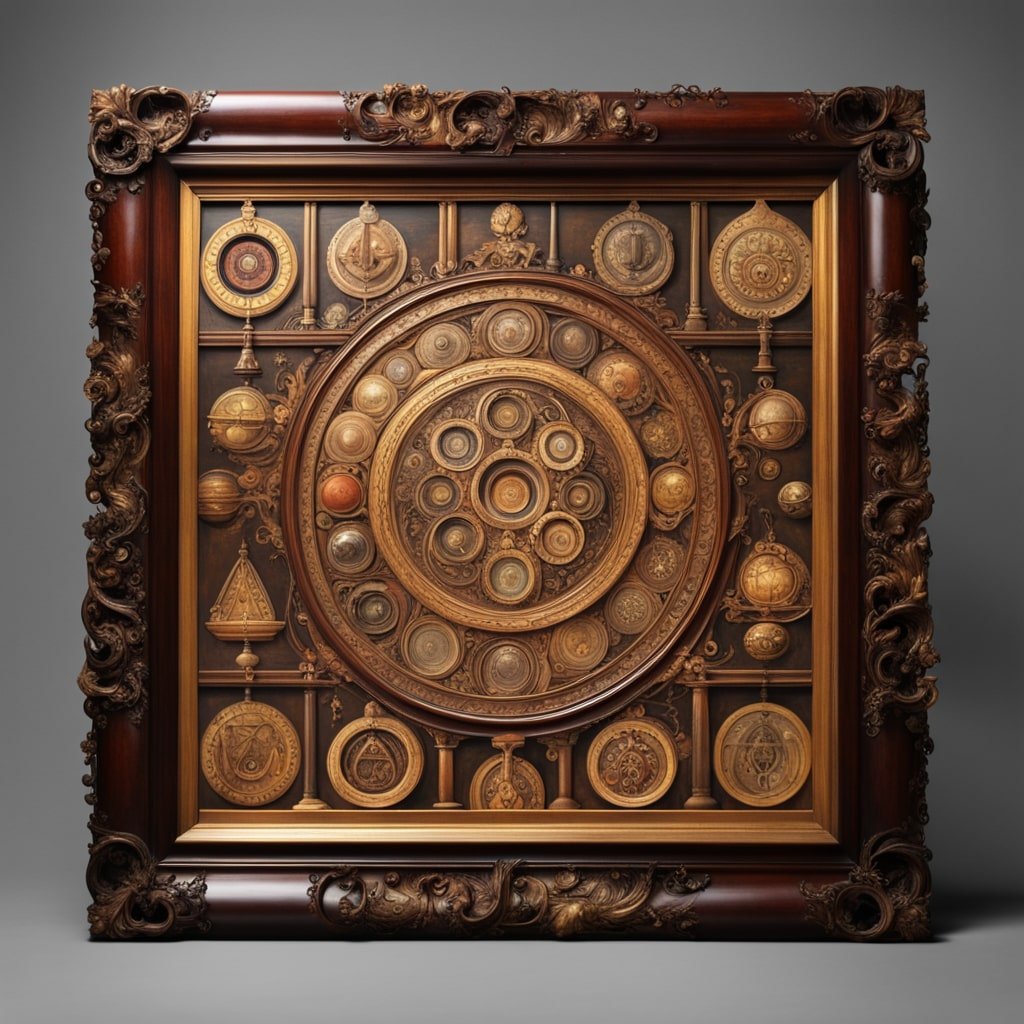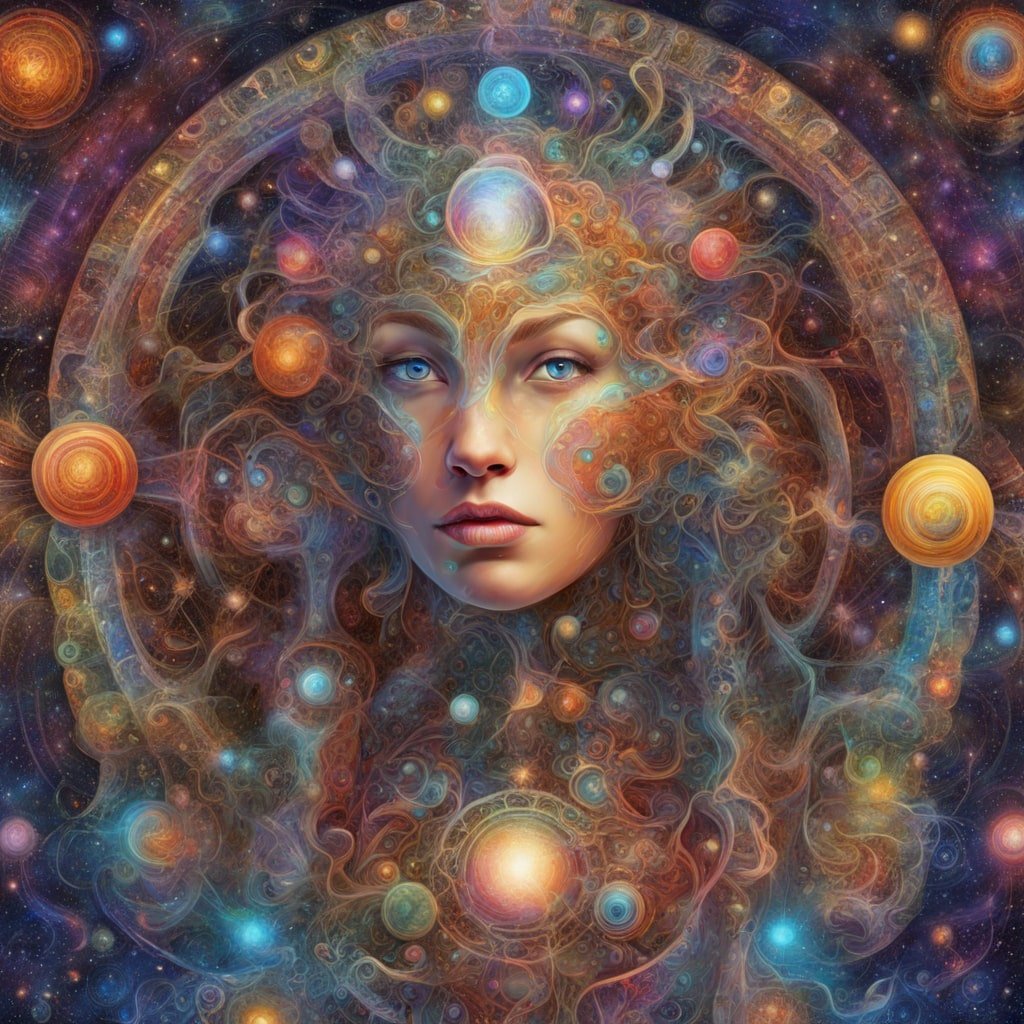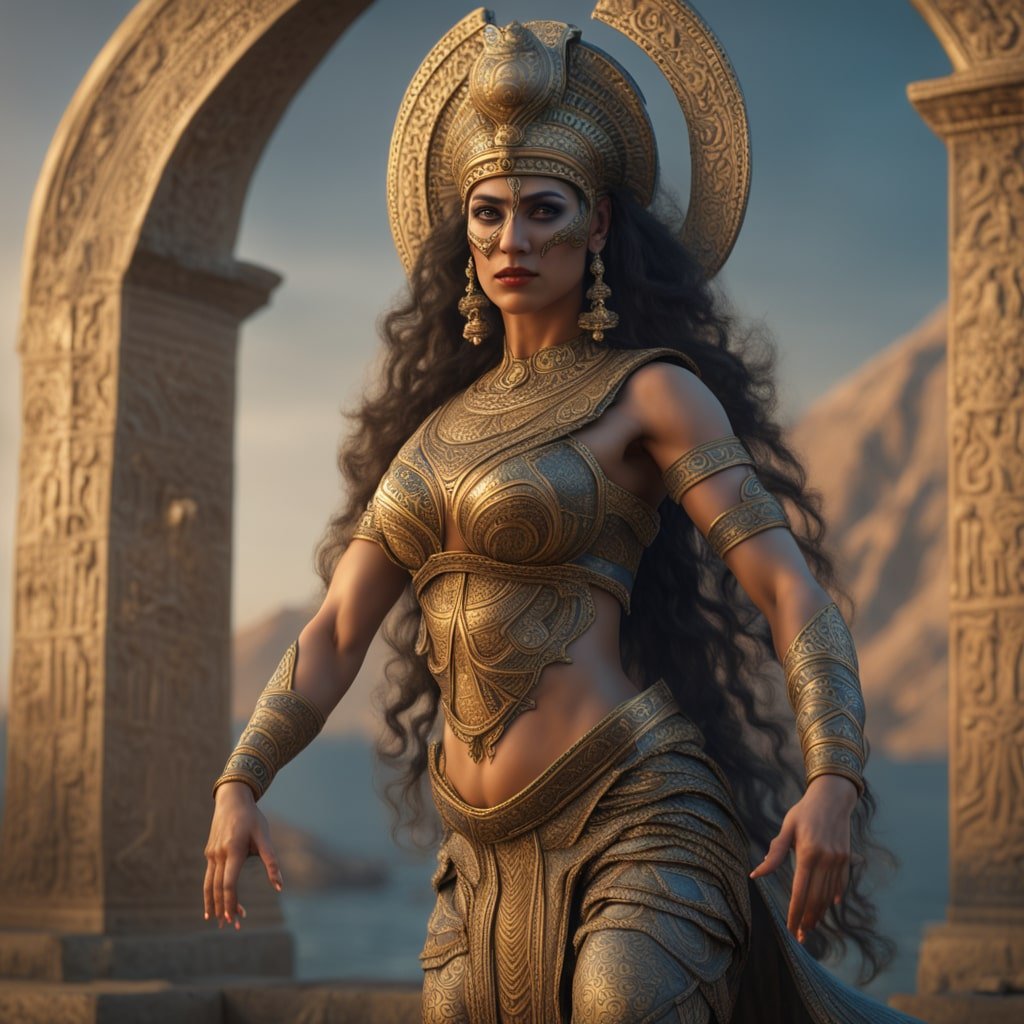Astrology's Enduring Search for Meaning in the Heavens
Starry Messengers: The Ancient Light of Astrology
Key Takeaways
Astrology represents humanity's attempt to find meaning by linking cosmos and earth.
Diverse ancient cultures elaborated astrology based on studying heavens.
Core components like zodiacs, planets, and houses articulate an intuitive cosmology.
Astrology conveyed divine mysteries and guided right living in ancient societies.
Shared archetypes reveal astrology's contemporary relevance for self-insight.
Astrology provides cosmic context for experiencing human existence.
Since time immemorial, humans have gazed up at the night sky and sought meaning in the celestial spheres. The precise origins of astrology are lost in prehistory, but ancient archaeological evidence reveals sophisticated astronomies developing across the globe by the 3rd millennium BCE. Early cultures from Babylon to China wove meticulous observations of planets and stars into their calendars, mythology, agriculture, and governance.
"The stars speak to man's infinite spirit." - Kahlil Gibran
Astrology represents humanity's earliest attempt to discern order within earthly change by reading cosmic portents in the heavens. While no longer a structuring worldview in modern times, astrology retains cultural fascination for the esoteric wisdom it has conveyed down the ages about our resonant relationship with the cosmos.
"The stars in the heavens that give light at night also serve for signs and for seasons and for days and years." - Genesis 1:14
In the Beginning, the Great Spirit filled the heavens with shimmering fires to illuminate the Long Night. Scattered across infinite dark, the First Stargazers kindled hope and wonder in mortal hearts below. Though uttered in tongues now dust, their ancient songs wove celestial spheres into the Loom of Life, making luminous the endless weave of Cosmos and Soul.
Starry Origins in Ancient Cultures
The foundations of astrology reach deep into the ancestral past across diverse civilizations. Archaeological and textual evidence reveals astrological precedents taking root through sacred astronomy and sky-watching.
"Astrology is one of the earliest attempts made by man to find the order hidden behind or within the confusing and apparent chaos that exists in the world." - Eysenck & Nias
When the world was new, the first people gathered on high hills at nightfall. They built great fires whose sparks rose to join the stars. The People prayed the Sky Clock's lights would guide their planting, reaping and journeying true. Soon came Wise Ones bearing scrolls filled with celestial secrets. "The gods' script," they whispered, reading heaven's unending story. Thus the Watchers of the Skies were born.
"The sun and moon and five other stars, which are called the planets, govern the heavens." - Plato
Mesopotamian celestial divination
Earliest astrological concepts found in cuneiform omen texts from 2500 BCE onward
Observational records of planetary movements and star risings in relation to seasonal changes
Gods revealed signs and warnings about royal destiny through eclipses, planetary alignments
MUL.APIN tablet (c. 1000 BCE) lists stars/constellations and optimal tasks by month
Heavenly bodies seen as conduits for divine communication with earthly affairs
Egyptian star worship
Elaborate astronomies integrated into calendars, architecture, myth and ritual
Stars like Sirius and Orion hold deep mythic significance, associated with Osiris, Isis, Horus
Pyramid/coffin texts (c. 2400 BCE) show sophisticated astronomical knowledge
Temples precisely aligned to stars like Canopus at Nekhen
Cairo Calendar (c. 1300 BCE) allocates deities and auspicious activities to star phases
Sky directly linked to divine order governing earthly and human realms
Vedic Jyotisha origins
Earliest astrological references in Vedic texts around 1000 BCE with lunar mansions
Jyotisha emerges as one of six Vedānga (vedic auxiliary sciences) by 500 BCE
Offered techniques for determining auspicious timing in Hindu rites and duties
Authors like Parashara consolidated jyotisha into predictive astrology by 1st century CE
Integrates astronomy, mathematics, omens, and Hindu cosmology into interpretative astrological system
Core concepts like lunar nakshatras evolved from these ancient Vedic foundations
Chinese celestial records
Archaeoastronomical sites from 4000 BCE like Taosi observatory reveal early solar study
Chinese astrological origins include legendary astronomer Houyi and Cangjie naming lunar mansions
Earliest extant Chinese astrotext Wuyun Liu Qiu (484 BCE) shows eclipses predicted already
Imperial astronomers carefully recorded astronomical data like comets, novae, sunspots
Astrological correlates deeply integrated with Chinese philosophy, divination, and statecraft
Climbing the Ladder of the Stars in Classical Antiquity
The classical period generated many foundational principles underlying Western astrological tradition practiced today. Greek and Roman thinkers built extensively on older Babylonian, Egyptian and Persian astrological systems incorporated into their cosmologies.
"That which is Below corresponds to that which is Above, and that which is Above corresponds to that which is Below, to accomplish the miracle of the One Thing." - Hermes Trismegistus
In a forgotten age, seekers gazed starward through crystal lenses that made planets into roaming beasts and zodiacs into flows of imagined light. "As above, so below," the mystics spoke, studying sky and soul as mirror images.
"The stars hold great influence over what comes to pass, and that it is within the ability of the philosopher to understand these influences." - Ptolemy
They mapped celestial highways that wove through human lives like Fates' threads, believing the spheres' music the harmony underlying mortal discord. Seven notes rang from seven heavens into seven metals and seven openings in Man - all resonating in cosmic consonance.
Synthesis with Greek Natural Philosophy
Greek philosophers integrated Babylonian astrology into scientific worldviews
Pythagoras and Plato helped legitimize astrology by linking it to metaphysics
Aristotelian physics inspired astrological causality via celestial spheres and elements
Hellenistic techniques included zodiac interpretations, planetary aspects, and dodecatemoria
Roman Standardization
Romans synthesized Egyptian, Persian, and Greek approaches into a systematic predictive art
Prominent Romans widely employed astrologers, from emperors to military leaders and poets
Manilius's Astronomica (c. 14 CE) expressed astrological cosmology in poetic form
Tebenu folios (3rd century CE) reveal working astrological practices
Ptolemy's Tetrabiblos (2nd century CE) established geocentrism and aspects as core principles
Astrology grown dominant in Roman culture from politics to medicine, reflecting belief the cosmic governed earthly
This flowering of astrological learning in the classical period established core elements of western approaches familiar today, including the primacy of celestial spheres, zodiac signs as markers of human character, and planets as transmitters of archetypal forces to shape individual lives and events. Astrology effectively conveyed an intuitive cosmology linking microcosm and macrocosm.
Core Components of the Astrological Language
While astrology is often dismissed today as obsolete superstition, its elaboration as a symbolic language reveals profound thought and metaphysical principles. Various astrological techniques serve to articulate cultural cosmologies. Studying these core components illuminates astrology's deeper contemporary relevance.
"The cosmos is within us. We are made of star-stuff. We are a way for the universe to know itself." - Carl Sagan
When the world was young, twelve celestial beasts circled the Pole Star, matching earth's seasons. The people below modeled their moons and planting by their paths. Bright Venus rose at dawn as the Shepherd whose lovely glance birthed love in human hearts. Red Mars burned to ignite valor and passion alike. Great Jupiter appeared as a kingly guide to luck and plenty, just as pale Saturn creaked slowly to bring hardship and wisdom.
"The circuit of the stars contains divine elements that have been appointed to specific transits at specific times." - Cicero
The shimmering pantheon wheeled overhead, stellar omens shaping fates below.
The Twelvefold Zodiac
Zodiac signs form 12 equal divisions of 30° around the ecliptic
Each section corresponds allegorically to a constellation and seasonal period
Signs represent archetypal stages in growth cycles and dimensions of human character
Conceptually links psyche and cosmos through shared patterning
Symbolizes the fullness of incarnated existence within cycles of becoming and dissolution
Luminaries - Sun and Moon
In astrology the sun signifies spirit, vitality, purpose, worldly achievement
The moon represents emotions, domestic needs, instincts, the inner shadow self
Sun relates to active directive principle, moon to containment and reflection like yin-yang
Their interrelationship in the chart offers insights into balance and integration of polarities
Planetary Archetypes
Planets classically associated with Roman gods to signify principles like love, power, beauty
Venus linked to harmony, Mars to force, Jupiter to growth and abundance
Saturn brings limitation, Uranus revolution and reform, Neptune spirituality
Represents how cosmic ordering principles shape human lives
Planet placements activate related themes in the natal chart
The Twelve Houses
Houses form divisions of experiential spheres like home, career, relationships
First six houses are outward oriented, last six inward
Planets in houses activate meanings, like Jupiter in the 9th stimulating philosophy and travel
Represents mapping of external and internal terrain of life
Aspects - Geometric Relationships
Aspects describe angles between planets based on relative orbital positions
Harmonious aspects align energies constructively, challenging aspects create tension
Trines and sextiles allow flow between archetypes, squares and oppositions create friction
Aspects show how cosmic forces interact synergistically or disruptively
Through these core astrological components, practitioners articulate a vision of cosmic forces at play in shaping personal potentials and propensities. While personalized, astrology points to transcendent unity within apparent diversity.
Starry Messengers - Astrology's Divine Discourse
For astrology's founders, astronomy and spirituality interwove seamlessly. Celestial movements represented the language of the gods, providing divine guidance for right living. Astrology offered a luminous lens for interpreting events and character.
"Astrology is assured of recognition from psychology without further restrictions, because astrology represents the summation of all the knowledge of antiquity." - C.G. Jung
In the First Days, sky and earth whispered in one tongue. Thunder was the Sky Father's drumbeat, lightning his luminous gaze. The slow dance of constellations told stories of gods and heroes. Eclipses foretold the Great Spirit's displeasure, comets heralded cosmic rebirth. To read such signs was the gift of prophets, to align human and heavenly will their duty. The star watchers read divine discourse in the cycling heavens, discerning the Great Mystery's presence.
"One can observe the course of the stars and understand thereby how the universe will change and what will transpire or not transpire for each person." - Zeno
Celestial Divination in Babylon
Gods were believed to speak through celestial omens and alignments
Astrologer-priests interpreted connections between heaven and earth
Seeking patterns in planetary cycles provided agency in fateful world
Goal of astrology was propitiating gods and securing divine favor
Sacred Astronomy in Egypt
Stars embodied manifestations of deities like Osiris, Isis, Horus
Priests closely studied heavens for astro-mythic knowledge
Cosmic order (Ma'at) governed earthly life
Sky honored as pathway of gods moving between realms
Jyotisha - Vedic Star Science
Jyotisha emerged from Vedic astronomy and calendrics
Offered tools to time rituals and actions for optimal blessings
Gods expressed architectonic wisdom through the heavens
Studying the stars aligned human and divine purpose
Unifying Heaven and Earth in China
Observation informed Emperor's role in preserving cosmic order
Aligning with Daoist principles of yin-yang harmony
Astrology underscored correspondence of macrocosm and microcosm
Heavens reflected earth, earth reflected heavens
For these ancient cultures, astrology provided more than prediction - it conveyed divine mysteries to guide right living in cosmos and society.
Zodiacal Archetypes - Patterns of the Psyche
Central to astrology are the twelve zodiac signs, each linked to a particular constellation along the ecliptic plane. Each sign forms a 30° portion of the sky, successively corresponding to different seasons of the year agriculturally.
"The twelve signs of the zodiac are karmic patterns; the planets are the looms, weaving the patterns." - Edgar Cayce
In astrological theory, zodiac signs also relate to archetypal stages in patterns of human growth and self-actualization. Each sign denotes characteristic potentials, struggles, and strengths which reflect back cosmic ordering principles.
"In the twelve signs are represented twelve general divisions of the heavens, thus marking the path which the sun travels over the earth in the twelve months of the year." - Vitruvius
When Sun Lord first traced the seasons, wise ones marked twelve totems along his path - Robin, Bull, Twins, Crab, Lion, Maiden, Scales, Scorpion, Archer, Goat, Water-Bearer, Fish. Each embodied stages in life's great Wheel. Yet the animals' spirits shone too in human hearts - initiatives first unfurling like green shoots, labors bearing fruit slowly as the Bull, ideas flocking like sparrows, nurturing as the Crab tends brood. All lives replay the celestial zodiac's timeless dance.
Aries - Primal Force
Cardinal initiation
Raw creative energy
Independence
Potential for selfishness
Taurus - Stability
Sense foundations
Practicality
Potential stubbornness
Enjoyment of senses
Gemini - Information
Intellectual curiosity
Adaptability
Scatteredness
Wit and communication
Cancer - Roots
Nurturing
Tenacity
Family orientation
Need for security
Leo - Radiance
Generosity
Strong identity
Potential for pride
Likes recognition
Virgo - Service
Analytical ability
Helpful
Potentially critical
Likes competence
Libra - Harmony
Balanced
Seeks partnership
Can be indecisive
Aesthetic taste
Scorpio - Intensity
Passion
Fixed will
Potential manipulation
Drawn to mysteries
Sagittarius - Adventure
Optimistic philosophy
Broad vision
Potential restlessness
Likes freedom and humor
Capricorn - Responsibility
Strong work ethic
Leadership
Inhibition
Seeks achievement
Aquarius - Innovation
Progressive thinking
Rebel spirit
Contrarian
Seeks collective good
Pisces - Transcendence
Spiritual instincts
Compassion
Prone to avoiding
Seeks unity
The zodiac wheel symbolizes the fullness and continuity of incarnated human experience - the trials, gradual unfolding, crises and opportunities for growth encoded in cosmic patterns endlessly reflected in earthly life.
Planetary Archetypes - Channels of Cosmic Character
In astrological tradition, the visible planets correspond to cosmic ordering principles which shape human existence. Named for Roman deities, they came to represent the essential archetypal needs and drives within human character. Their positions in the natal chart act as channels for those core principles to express the potentials of the individual.
"Do not all the world over, the starres rule and governe both bodies and states of men after sundry sorts, by their influences according to their configurations?" - Agrippa
On the celestial loom, eight threads interweave with all souls. Lustrous Venus gifts her grace to charm each dignity life weaves. Fiery Mars drives daring and passions. Royal Jupiter expands vistas wide. Karmic Saturn weighs each deed and dream. Uranus' quicksilver lightning ignites insight. Neptune's oceanic dream dissolves old fear. Pluto's dark fire forges will. Guided thus, life's tapestry grows patterns both bold and wise.
"The sun, the moon and the five planets rule in the heavens and give meaning to the world of man below." – Socrates
Venus
Goddess of love and beauty
Governs pleasures, relationships, aesthetics
Bestows charm, harmony, and creative tastes
Mars
God of war
Drives ambition, passions, aggression
Grants motivating force and competitive zeal
Jupiter
King of gods
Expands horizons, luck and popularity
Magnifies optimism, exploration, joy
Saturn
Father Time
Brings limitation, obstacles, authority
Teaches patience, realism, discipline
Uranus
Sky Father
Awakens reform, revelation, rebellion
Sparks change, originality, disruption
Neptune
Lord of seas
Dissolves boundaries, inspires mysticism
Refines spirituality, imagination, dreams
Pluto
Lord of underworld
Surfaces mass forces, nuclear power
Metamorphosizes, strips illusions
In astrological perspective, the dance of cosmic forces conveyed by planetary placements helps shape individual character as well as collective trends over eras. The planets signify neither good nor bad per se; their combinatory meanings result from whole chart dynamics. Yet each planet channels essential human potentials.
The Twelvefold Journey - Astrological Houses
Beyond zodiac signs, the astrological houses represent divisions of experiential spheres from external to inner life. The houses comprise 12 wedges around the natal chart wheel corresponding to fields of activity and environment.
"Houses are the fields of experience, representing specific areas of life activity." - Isabel Hickey
Like a sky village with many lodges, each with a purpose, the wheel's Twelve Houses frame a life. In the First House dawn's hopes are born. Second, earth's bounty arrives. Third, words and kin weave home. Fourth anchors with heartstone hearth. Fifth risks create. Sixth builds bodily health. Seventh finds love's mirror. Eighth meets shadow and death's mystery. Ninth seeks higher wisdom. Tenth climbs duty's summit. Eleventh gathers community. Twelfth dreams the journey's meaning. Thus from star to star we grow.
"As there are twelve signs of the zodiac, so there are twelve activities and spheres of action over which they preside." - Marcus Manilius
House Keywords
1st House - Self, Initiation
2nd House - Resources, Sensuality
3rd House - Siblings, Communication
4th House - Home, Ancestry
5th House - Creation, Risks
6th House - Wellness, Responsibility
7th House - Partners, Sociality
8th House - Mysteries, Fears
9th House - Beliefs, Exploration
10th House - Status, Achievement
11th House - Groups, Ideals
12th House - Dreams, Divinity
Astrologers interpret a planet's house position as the spheres of life its archetypal force shapes. For instance, Mercury in the 3rd house enhances cognitive skills and articulation, while Jupiter in the 9th inspires philosophical seeking and travel. The houses provide definition for chart insights to manifest through different facets of lived experience.
Sacred Architecture - Geometric Aspects
In astrological interpretation, geometric angles formed between planets based on relative orbital positions are called aspects. Harmonious aspects like trines and sextiles align archetypal energies coherently, while challenging aspects like squares create friction requiring integration.
"The aspects are measured by the angular separations of the planets." - Dorotheus
Great Sky River's freed waters flow as lively Fish, while Earth Mountain's stones stand firm as patient Bull. Where river meets mountain, energies realign. Like this, the skies dance patterns calling aspects as they embrace or conflict, ever shaping the land below. In trines ease flows, in squares strife can forge strength. Sextiles inspire, oppositions balance. In cosmic geometry, the land's contours emerge. So too in humbler lives - the soul's aspects map the grounds on which we build.
"The stars in their progress through the sky trace the circumference of the cosmic order. They follow their ordained paths according to angular relationships." - Posidonius
Flowing Aspects
Trines (120°) allow effortless harmony between archetypes
Sextiles (60°) facilitate creativity between principles
Enable constructive expression and synergy of potentials
Friction Aspects
Squares (90°) denote polarization and obstacles between forces
Oppositions (180°) require balancing opposing needs
Generate stress but growth potential through integration
Analyzing natal aspects provides insight into inherent strengths, developmental tensions, and opportunities for self-actualization. Chart aspects articulate
Analyzing natal aspects provides insight into inherent strengths, developmental tensions, and opportunities for self-actualization. Chart aspects articulate a vision of cosmic forces working in tandem or at cross-purposes within the individual psyche and life.
Luminous Cycles - Solar and Lunar Forces
Within astrology, the sun and moon hold distinct meanings relative to human experience. The sun represents the conscious self seeking actualization, while the moon denotes emotional needs and unconscious instincts. They embody archetypal polarities like illumination and reflection, activity and receptivity, matter and psyche.
"We must recognize, then, the essential nature of the moon-goddess in the ancient religious system and its relevancy to the processes of life...It is this allegorical symbolism that provides the key to esoteric astrology." - Dion Fortune
Sun Lord gives life through the solar day, but his fiery forge rests at night. Moon Lady weaves gentle tides of dreams, shadow, and the waters of birth and forgetting. As sun centers the village, moon circles its bounds, together making whole what's been broken, for neither light nor dark alone completes wisdom's cycle. Thus Sky Twins take turns guiding spirits above and below through celestial meanderings - the cosmos their dance, our lives its earthly echo.
"The interchanging phases of sun and moon in balanced rhythm are the regulators of the months and years, of sowing and reaping, of the vitality and depletion of bodies." – Aristotle
Solar Significance
Relates to core identity, outward functioning, life purpose
Symbol of radiant divine spirit indwelling worldly forms
Represents the will, leadership abilities, generative vitality
In myth the active sun is heroic figures like Apollo, the consciousness principle
Lunar Meaning
Governs emotions, domestic sphere, and shadow aspects
Rooted in bodily existence, cycles, tides and repetition
Symbol of containment, reflection, reciprocity
Mythic lunar deities like Artemis show receptive, nurturing qualities
Indicates fluidity balancing solar fixity
Studying their dynamic interaction by chart aspects provides insights into personality integration between intentional will and unconscious drives, reason and emotion. Astrology's sun and moon archetypes offer keys to achieving wholeness through balance.
Eastern Perspectives on the Skies
While Western astrology is most familiar globally, unique astrological approaches developed in other ancient cultures influenced by indigenous cosmologies, values, and needs. Contrasting these traditions' emphases reveals both core universal principles and divergence reflecting civilizational priorities.
"The Chinese were brilliant astronomers and interpreted the stars as portents of good and evil events." - John Blofeld
While star watchers spanned the wide earth, not all mapped heavens alike. Some perceived the Great Cycle as fixed spheres circling the pole. Others felt rippling interchanges of Yin and Yang energies dancing. Some tracked sky beasts circling their lands. Others saw divine script to interpret in star movements. Yet for all, celestial lights linked mortal changes to the Great Spirit's eternal order. Many lamps lit the astrologers' sky village, paths winding to wisdom's summit by varied trails.
"The sage understands the movement of the heavens. He observes the laws of yin and yang and interprets the order of the stars." - Confucius
Chinese Astrology
Origins in Taoist yin-yang cosmology and theory of five elements
Emphasizes living in cyclical balance, not deterministic fate
Uses a lunisolar calendar sensitive to moon phases
Zodiac of twelve animal signs expresses personality types
Numerology, divination, Chinese medicine connections
Vedic Jyotisha
Aims to assess optimal timing aligned with dharma
Stresses astro-psychology - self knowledge and karma
Uses sidereal zodiac oriented to star constellations
Considers transitional periods, lunar mansions (nakshatras)
Notes spiritual remedies like mantras to align with divine will
While using different tools, these systems affirm shared intuitive insight - we are bound to the rhythms of the cosmos, and within them our purpose and development are encoded.
Starry Messengers - Carrying the Ancient Torch
For astrology's founders, astronomy and spirituality interwove seamlessly. Celestial movements represented the language of the gods, providing divine guidance for right living. Astrology offered a luminous lens for interpreting events and character.
"Astrology is the science which tells us what the stars foretell. Astronomy is the science which tells us how to read the message correctly." - Samuel Reynolds Hole
In modern times astrology retains appeal as a symbolic language illuminating self-understanding and our relationship to the cosmos. While no longer a structuring worldview, its shared archetypes resonate across cultures as an enduring mapping of the human condition. The allure of astrology upholds our perennial search for meaning and transcendent assurance - the faith that we are all written in the stars.
Astrology's longevity and ubiquity across civilizations testifies to humanity's enduring intuition - the sense that celestial lights hold deeper messages for life on earth. Astrology represents our oldest symbolic system linking below and above. Its starry messengers beam down transpersonal guidance to help travelers navigate by, if we have eyes to see.
"Heavenly signs foretell the things that are coming to pass on earth. To read the message of the stars is a gift of wisdom." - Cicero
When the last ancient astrologer closed her weary eyes, the fixed stars burned on overhead. Their wheeling patterns still cycled through seasons, as timeless in themselves as when first lit in the foundry of the universe. Below turned a quickening world, forgetting heaven's clock to kindle its own restless fires.
Gone the prophets who first read the cosmic template in earthly lines. But her message lingers for later minds to recover - the living reminder that all life's myriad shapes still walk the trackways of the stars.
Join the Ultra Unlimited newsletter to receive more illuminating guides to ancient wisdom and tap into timeless insights that can drive creative transformation and healing in your life.
Connect with us on social media to stay up to date on our latest ancient wisdom guides, intriguing history articles, and mystical musings. Follow us on Twitter, Facebook, and Instagram to join an inspired community exploring the mysteries of the past.
Add our RSS feed to your favorite news reader to receive our stories straight to your device as they are published.
Read our latest posts and browse the archives to unlock timeless wisdom that can expand your mind and feed your spirit. The journey into the past holds keys to the present if you dare to search.
References
Campion, N. (2012). Astrology and cosmology in the world’s religions. New York University Press.
Forrest, S. (2011). Book of the moon. Wessex Astrologer.
Gauquelin, M. (2014). The cosmic clocks: From astrology to modern science. Henry Regnery Company.
Greene, L. (2019). Astrology for the soul. Weiser Books.
Hand, R. (2000). Planets in transit: Life cycles for living. Whitford Press.
Rochberg, F. (2010). In the path of the moon: Babylonian celestial divination and its legacy. Brill.
Roşu, A. (1995). Egyptian astronomy. Vancea.




























